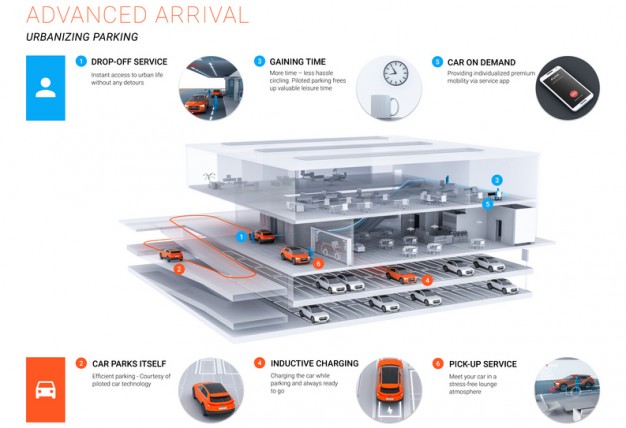 The debate over whether we will have driverless cars rages on, to little or no avail, but likely for naught. Driverless or autonomous cars will be the norm for the future, and many semi-driverless cars are on the roads today. Tesla today has a system called “Summon” that allows for some of its cars to drop off its passengers at the front of the building and then go park itself, either in a nearby garage or maybe return home to your own garage and wait until you “summon” it again to pick you up at the office.
The debate over whether we will have driverless cars rages on, to little or no avail, but likely for naught. Driverless or autonomous cars will be the norm for the future, and many semi-driverless cars are on the roads today. Tesla today has a system called “Summon” that allows for some of its cars to drop off its passengers at the front of the building and then go park itself, either in a nearby garage or maybe return home to your own garage and wait until you “summon” it again to pick you up at the office.
Why would we be writing about that subject today on a construction website? One, because it is fascinating that the technology is moving so fast and two, because of the impact that autonomous cars and trucks will have on the future of construction of new roadways and parking spaces necessary for office buildings of the future.
Today, one of the big negotiation points for tenants looking for space in new office buildings is the number of parking spaces required to park the employees that will be housed in the building. The ratio of spaces per 1,000 square feet of lease space in the building can run as high as 5 spaces per 1,000 sf. for some engineering firms.
Not only is that an expensive proposition, it can become a real problem in a 500,000 sf. new building. If you do the math, then 500,000/1,000 = 500 and 500x500 =2500 spaces. Each parking space and drive today is about 400SF and the cost of those parking garages in this region is about $35/ sf. or $14,000 each. Building stand-alone garages is one thing, but stacking that parking under a 25 or 30 story building is a totally different proposition. Some figures estimate that the cost per space in a high rise can run as high as $50,000. The use of autonomous cars could reduce the size of those garages by as much as 60% according to the article and that translates into lower development and construction costs and lower lease rates as well.
Driverless or autonomous cars or “on-call cars” will change the shape and size requirement for new structured parking garages. In existing garages there will be a re-design of the parking patterns to respond to the new need.
How? You might ask.
A recent post in Car and Driver entitled The Parking Garage of the Future: Big Makeover Coming in Autonomous Age focuses on a proposed mixed use Business Park in Nashville where the planners and developers are considering the impact of the autonomous cars on the lifestyle of the residents and tenants in the mixed-use development.
According to the planners, “Autonomous cars bring the likelihood that drop-off zones will be needed for vehicle occupants at the front of the buildings. Once occupants exit cars at a designated area, the cars can park themselves. And if there’s no need for humans to exit parked cars, they can fit into narrower berths that may eventually shrink from a traditional 9.0-foot width to perhaps 7.0- or even 6.5 feet wide. Squeezing vehicles into tighter spaces in turn saves millions in costs for builders, homebuyers and consumers alike. But that’s just the small stuff.”
“Connected cars add another dimension to the autonomous capabilities. Whether they’re privately owned or shared vehicles, the ability to summon a ride remotely means garages may not even need to be located smack-dab in the middle of shopping districts or close to city centers. The garages can potentially be moved out of areas where real estate is at a premium. Not only does this mean big changes for parking garages, but big changes for the areas around them.”
The Tesla designers are not the only ones looking at “valet capabilities” for their autonomous cars, the other majors are testing that capability as well.
Expect that your future building designs will begin to adapt to the next wave of autonomous cars by 2020 at the latest. That means that you have one more change on the way. Summon, it’s comin’ soon to your neighborhood and shopping center and office park and center city.


